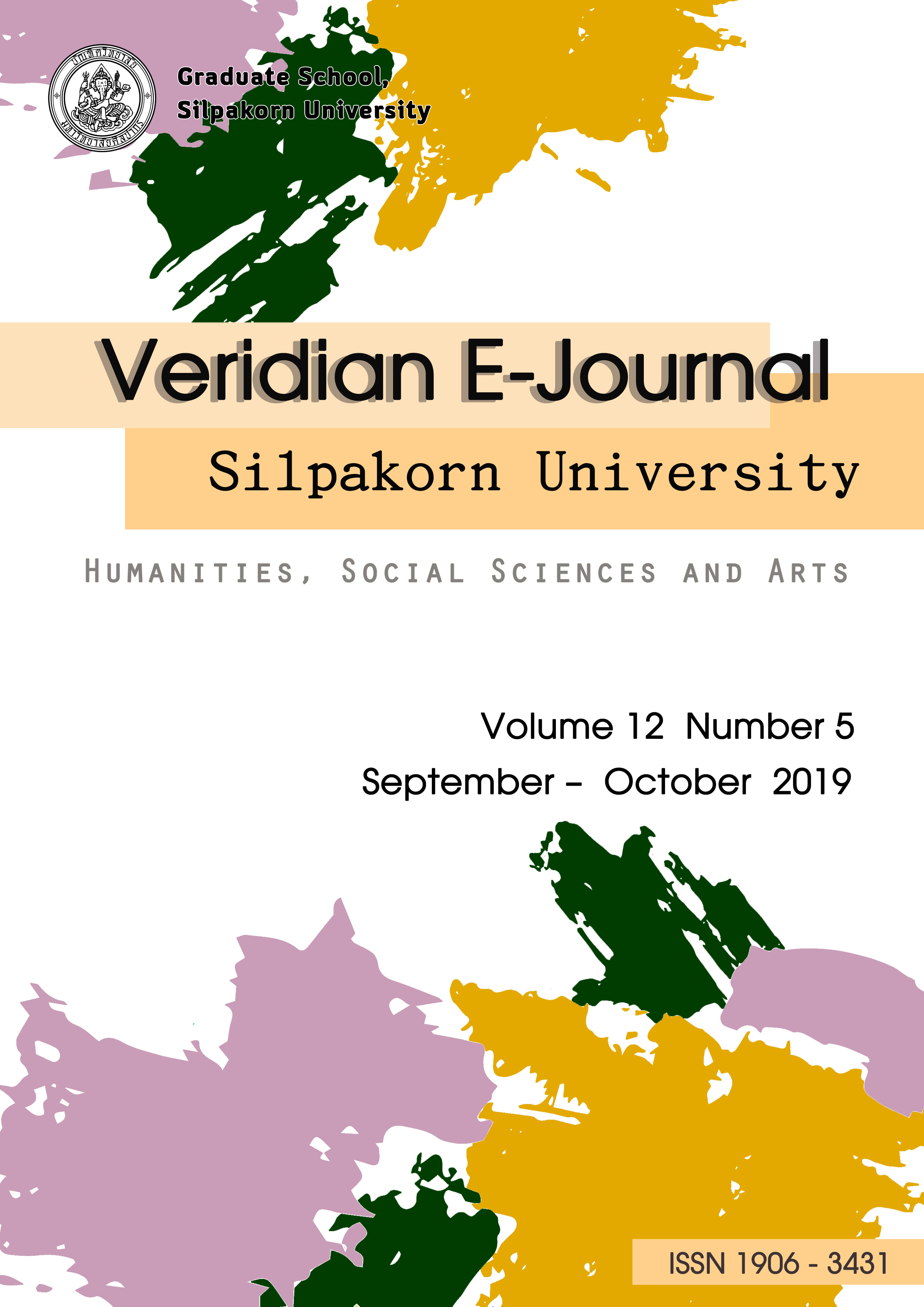การศึกษาการรายงานผลการวิเคราะห์ถดถอยโลจิสติคสำหรับงานวิจัย (The Study on the Report of the Logistic Regression Analysis Results in Research Work)
Main Article Content
Abstract
การรายงานผลการวิเคราะห์ถดถอยโลจิสติคซึ่งเป็นกระบวนการวิจัยวิธีหนึ่งที่นิยมใช้สำหรับงานวิจัย มีวัตถุประสงค์เพื่อถ่ายทอดองค์ความรู้ให้เข้าใจวิธีการทุกขั้นตอน ตั้งแต่วัตถุประสงค์ของการใช้กระบวนการวิเคราะห์ข้อมูล การอ่านผล และการรายงานผล การวิเคราะห์ถดถอยโลจิสติคเป็นการวิเคราะห์เพื่อค้นหา ตัวแปรอิสระหรือตัวแปรทำนายที่อธิบายโอกาสการเกิดเหตุการณ์ตามตัวแปรตามหรือตัวแปรเกณฑ์ และสร้างสมการถดถอยโลจิสติคทำนายโอกาสที่จะเกิดเหตุการณ์ที่ผู้วิจัยสนใจ โดยคัดเลือกตัวแปรทำนายที่เหมาะสมเพื่อทำให้เปอร์เซ็นต์ความถูกต้องของการทำนายมีค่าสูงสุด โดยมี 2 โมเดลขึ้นอยู่จำนวนตัวแปรเกณฑ์หรือ ตัวแปรตาม ได้แก่ โมเดลการวิเคราะห์ถดถอยโลจิสติคแบบทวิที่ตัวแปรเกณฑ์ มี 2 ค่า เช่นการเป็นโรคหัวใจและไม่เป็นโรคหัวใจ และโมเดลการวิเคราะห์ถดถอยโลจิสติคแบบพหุที่ตัวแปรเกณฑ์ มีมากกว่า 2 ค่าขึ้นไป เช่นขนาดสถานศึกษา แบ่งเป็น เล็ก กลาง ใหญ่ และใหญ่พิเศษ ส่วนตัวแปรอิสระอาจจะเป็นตัวแปรเชิงปริมาณหรือตัวแปรเชิงคุณภาพหรืออาจจะมีทั้งตัวแปรเชิงปริมาณและตัวแปรเชิงคุณภาพก็ได้ เนื่องจากการวิเคราะห์ถดถอยโลจิสติคเป็นการหาความสัมพันธ์ระหว่างตัวแปรทำนายกับตัวแปรเกณฑ์ที่ไม่มีความสัมพันธ์เชิงเส้น ดังนั้นเพื่อให้การสรุปรายงานผลการวิจัยมีความชัดเจนและง่ายต่อการทำความเข้าใจจึงจำเป็นต้องมีการปรับให้อยู่ในรูปแบบความสัมพันธ์เชิงเส้นในรูป log ของ odds ซึ่งเรียกว่า logit
The Report of the Logistic Regression Analysis Results is one of the popular research processes used for the research work. It aimed to pass on the knowledge of understanding in all processes which consist of the purpose of use, data analysis processes, results reading and results report to the students. The logistic regression analysis for research work aims to explore independent variables or predictor variables, describing the probability of event affected by dependent variables or criterion variables; and to form regression logistic model to predict the
probability mentioned. The predictor variables are properly selected to maximize the accuracy percentage. Two models are specified: binary logistic regression model, having two criterion variables, such as ones with heart disease and ones without heart problem; multiple logistic regression analysis model, having more than two criterion variables, such as size of schools (small, medium, large, and extra-large.) Regarding free variables, either quantitative variables or qualitative variables can be applied or both. Since the regression logistic analysis, investigating the relationship between the predictor variables and the criterion variables, has no linear relation, it is necessary to adjust the conclusion in order to bring about clarity and easy understanding by applying linear relation in the form of log Odds called logit.
